
Roots
For those who journey with textured hair, the story of moisture is not merely a chapter in a beauty guide; it is an ancestral whisper, a timeless cadence echoing from the very source of our being. From the intricate patterns of a coiled strand to the deep pigments that give it life, textured hair holds within its very structure a history of care, resilience, and identity. This connection to moisture, now quantified by modern science, was intuitively understood by generations long past. Their practices, honed over millennia, reveal a profound communion with nature and a meticulous understanding of what these unique hair patterns truly require to thrive.
To truly grasp how ancestral hair rituals shape our modern moisture routines, one must first appreciate the elemental biology of textured hair. Unlike straight hair, the elliptical or flattened cross-section of a coiled strand, coupled with its often higher cuticle count, means natural oils produced by the scalp struggle to travel down the hair shaft. This inherent characteristic leaves textured hair more susceptible to dryness and breakage, a fundamental truth that our ancestors recognized and meticulously addressed through their daily living. This recognition formed the bedrock of their care, long before microscopes revealed follicular nuances.
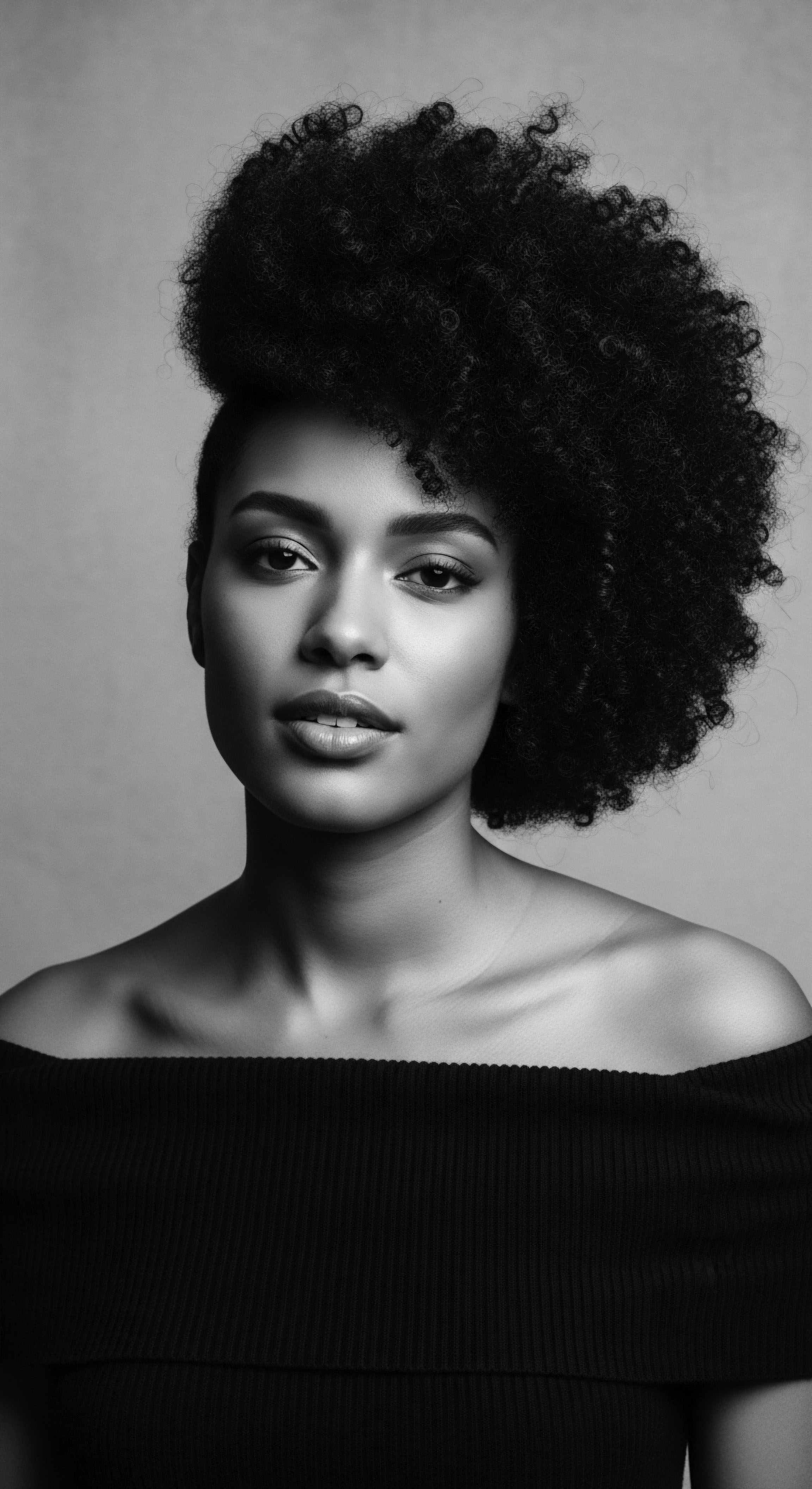
Hair’s Elemental Structure and Thirst
The architecture of a strand of hair is a wonder. For textured hair, this architecture presents a unique set of needs. The twists and turns of a coil create natural points where moisture can escape and where protective sebum struggles to descend. This structural reality makes moisture retention a continuous quest for those with tightly coiled or wavy patterns.
It is an intrinsic aspect of our hair’s heritage, dictating a need for external interventions to maintain its suppleness and strength. Ancient communities, without the benefit of scientific diagrams, observed this reality in the vibrancy or brittleness of hair, adapting their methods accordingly.
Ancestral wisdom recognized textured hair’s innate thirst, leading to care practices focused on moisture retention long before modern science articulated the reasons.
The classification systems we use today—from loose waves to tight coils—attempt to categorize this diversity, yet our ancestors understood hair’s unique language on a more visceral level. They knew hair not just by its visible curl, but by its feel, its response to the environment, and its individual spirit. This deep, experiential knowledge informed their approach to moisture, recognizing that what nourished one head might require slight variation for another, even within the same kinship group. Such understanding transcended mere observation; it bordered on a living kinship with the hair itself.

Traditional Understanding of Hair’s Nature
In many African societies, hair was not a mere adornment; it served as a powerful communicator of identity, social standing, age, and even spiritual connection. This elevated status meant hair care was never a casual undertaking. It was a practice imbued with purpose, reverence, and communal significance. Maintaining hair’s health and luster, particularly its moisture, was integral to its symbolic power.
This was not just about appearance, but about the very well-being of the individual and their place within the collective. The rituals surrounding hair were reflections of a broader cultural understanding of health, community, and the human spirit.
Consider the Yoruba people of Nigeria, where the phrase “Irun Kiko,” or hair threading, dates back to the 15th century. They considered hair as important as the head itself, believing that caring for both brought good fortune. This perspective naturally extended to preserving hair’s intrinsic moisture, a vital element for its health and appearance.
The very tools and techniques employed were often derived directly from the earth, speaking to a symbiotic relationship with their surroundings and an understanding that true nourishment came from natural sources. This reverence underscores the foundational role of moisture in ancestral hair health.
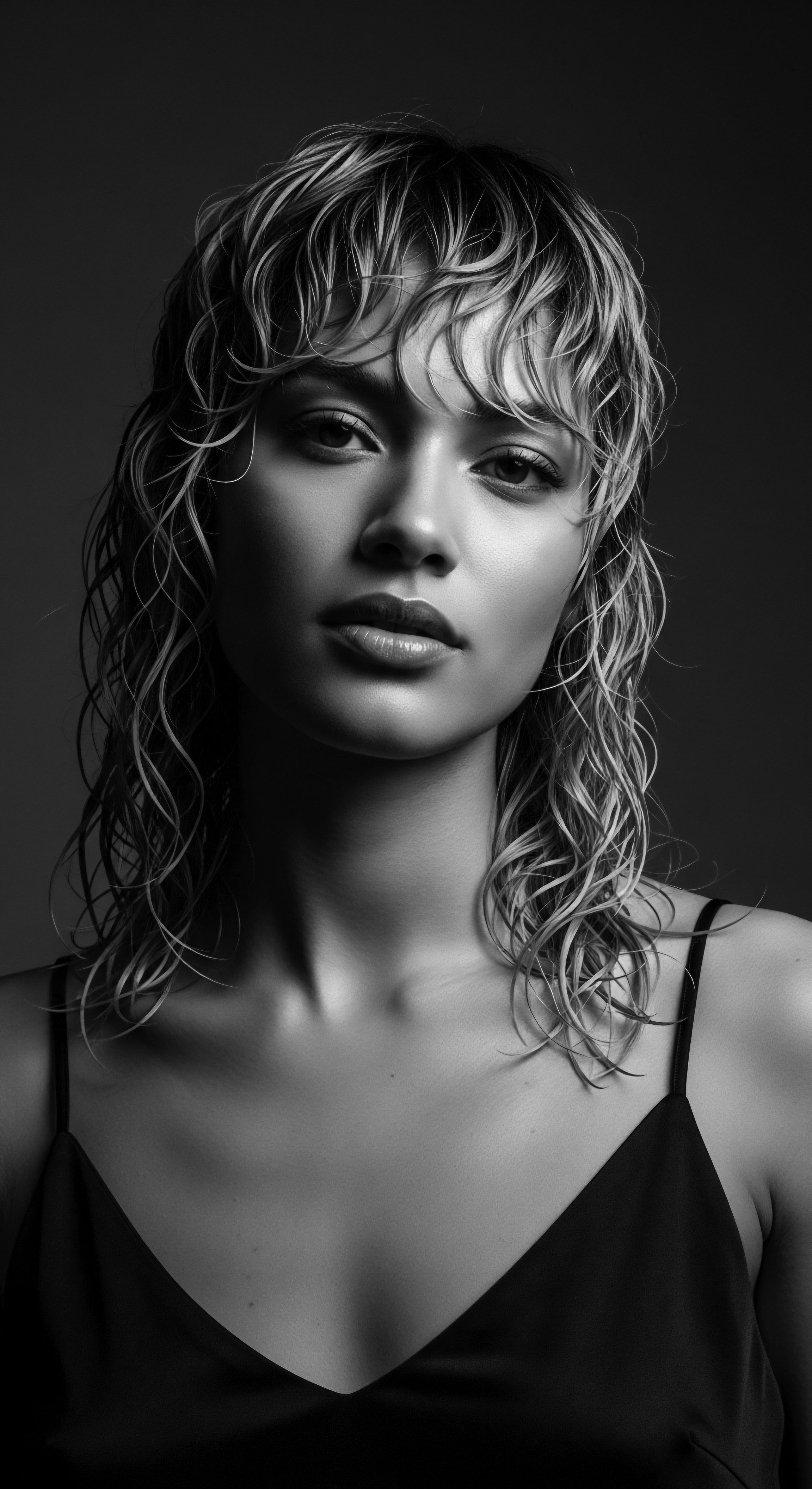
Ritual
The legacy of ancestral wisdom manifests most vibrantly in the rituals themselves—the deliberate, often communal, acts of care that protected and nourished textured hair. These were not quick fixes or fleeting trends; they were deeply embedded practices, passed down through generations, each movement carrying the weight of tradition and the warmth of shared experience. Modern textured hair moisture routines, from our deep conditioners to our leave-in applications, echo these ancient rhythms, even if we sometimes forget the original pulse.
The rhythmic application of plant-derived oils and butters stands as a core ancestral practice for imparting moisture. In West African traditions, oils and butters were used to keep hair moisturized in hot, dry climates. These often accompanied protective styles to maintain length and health.
Such practices were not simply about topical application; they often involved massaging these rich emollients into the scalp and along the hair shaft, a kinesthetic form of care that stimulated circulation and ensured even distribution. This deep, tactile engagement with the hair and scalp laid the groundwork for contemporary “LOC” or “LCO” methods—liquid, oil, cream—which also prioritize layering moisture and sealant to lock in hydration.
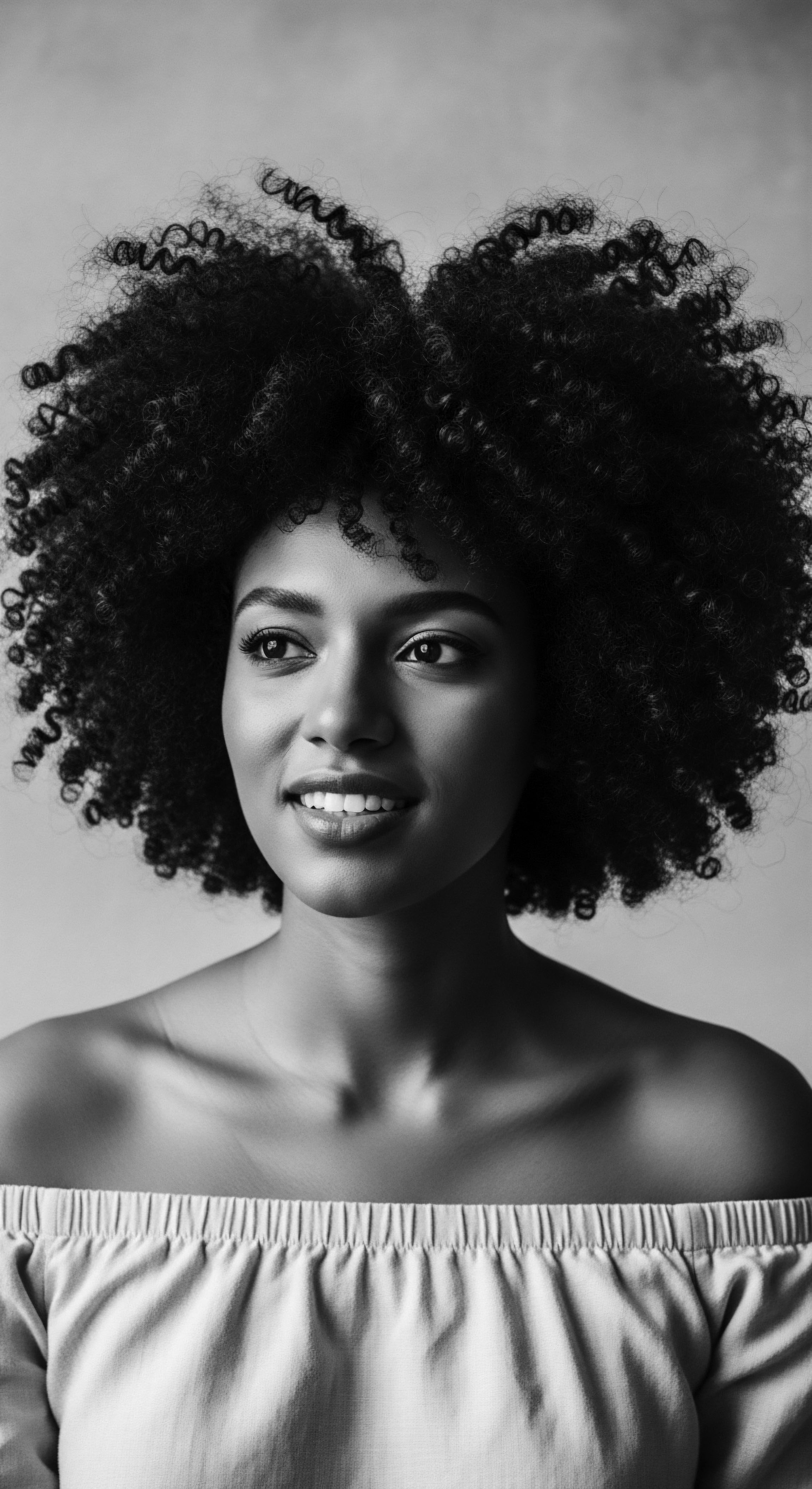
Ancient Moisture Techniques Enduring
Ancestral techniques for moisture retention were diverse, adapted to specific environments and available resources. Yet, a common thread runs through them ❉ a focus on preservation and protection. Protective styles, for example, were not just aesthetic choices; they were strategic defenses against environmental stressors that could compromise hair’s hydration.
Braids, twists, and various forms of hair threading offered respite from daily manipulation and exposure, safeguarding precious moisture within the styled hair. This understanding of hair as something to be shielded, not constantly exposed, is a guiding principle that continues to inform modern protective styling.
- Shea Butter ❉ Sourced from the Vitellaria paradoxa tree in West Africa, shea butter has been used for centuries as a natural remedy for dry hair. Its rich composition of fatty acids and vitamins provides deep nourishment and locks in moisture, preventing breakage and split ends.
- Palm Oil ❉ Dating back 5000 years to West Africa, palm oil, particularly red palm oil, was used for its emollient properties to soothe skin and condition hair. It contains myristic and steric acids, which can cleanse, condition, and add shine, creating a protective layer to shield hair from environmental elements.
- African Threading ❉ Known as “Irun Kiko” among the Yoruba people of Nigeria, dating to the 15th century, this protective style involves wrapping hair sections with thread. It stretches hair without heat and helps retain moisture by sealing it within the wrapped strands.
The communal aspect of these rituals further deepened their impact. Hair care was often a shared activity, mothers braiding daughters’ hair, friends styling one another’s tresses. This bonding fostered a sense of community and reinforced the value of these traditions.
The transfer of knowledge was not just instruction; it was a loving exchange, a shared experience that imbued the act of hair care with profound social and cultural meaning. This echoes in today’s shared spaces, from salons to online communities, where individuals with textured hair find solidarity and guidance in their care journeys.
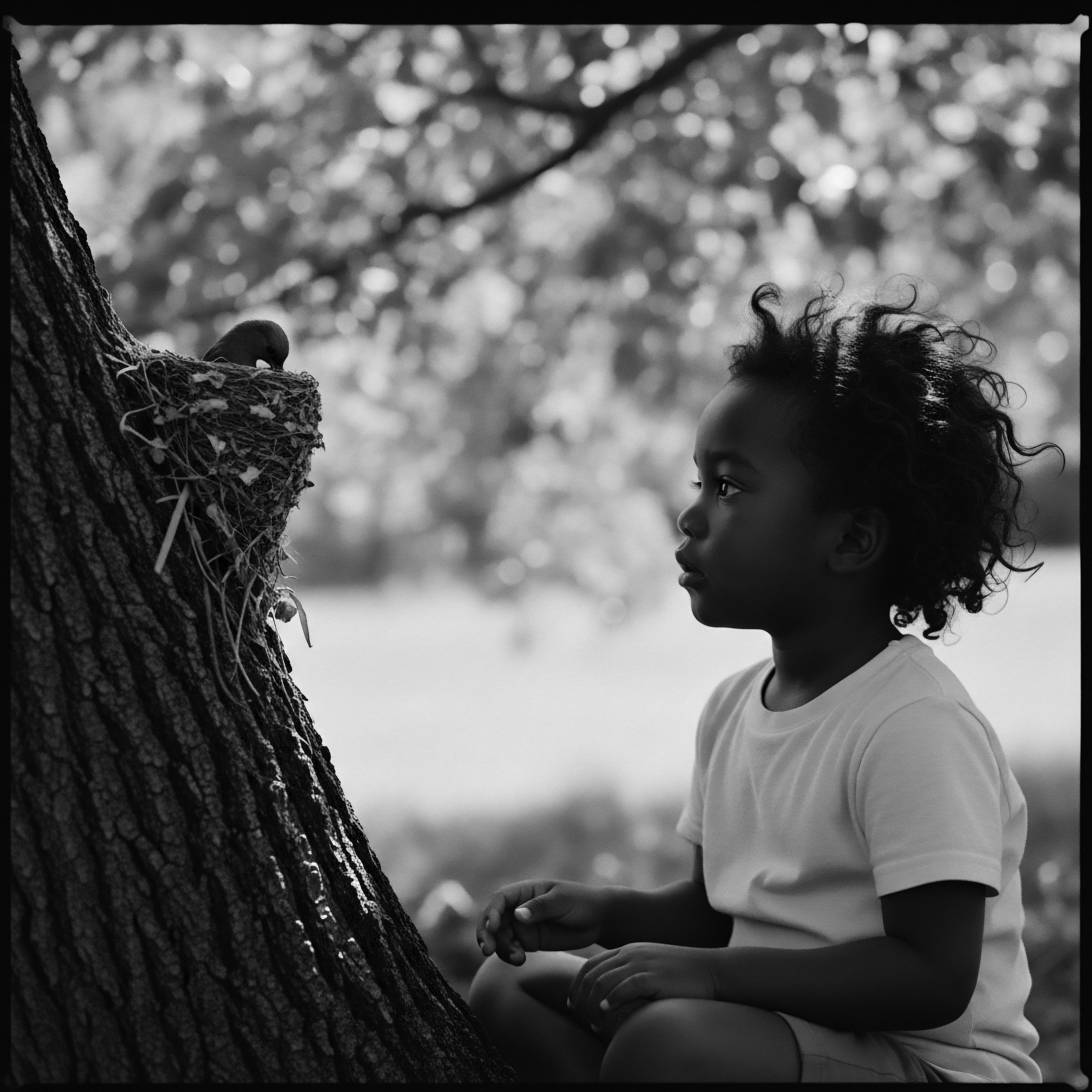
A Culture of Care and Community
From the intimate spaces of family compounds to bustling communal gatherings, hair care was a significant social event. It was a time for storytelling, for sharing wisdom, and for reinforcing familial and communal bonds. The hands that tended the hair were not merely performing a task; they were transmitting heritage, offering comfort, and affirming identity. This holistic approach to hair care—where physical nourishment was interwoven with emotional and spiritual well-being—is a profound aspect of our ancestral legacy.
Ancient protective styles and communal oiling practices reveal a timeless understanding of hair health and community connection.
For example, in the African diaspora during the era of enslavement, despite immense hardship, hair care persisted as a vital act of cultural resistance and survival. Enslaved people would gather on Sundays, their only day of rest, to braid each other’s hair, using available materials like butter or goose grease for moisture and protection. These clandestine rituals preserved a semblance of dignity and connection to their heritage, transforming a necessity into an act of profound self-preservation and communal solidarity. These practices, born of resilience, became critical pathways for the preservation of ancestral knowledge, ensuring its transmission across generations.
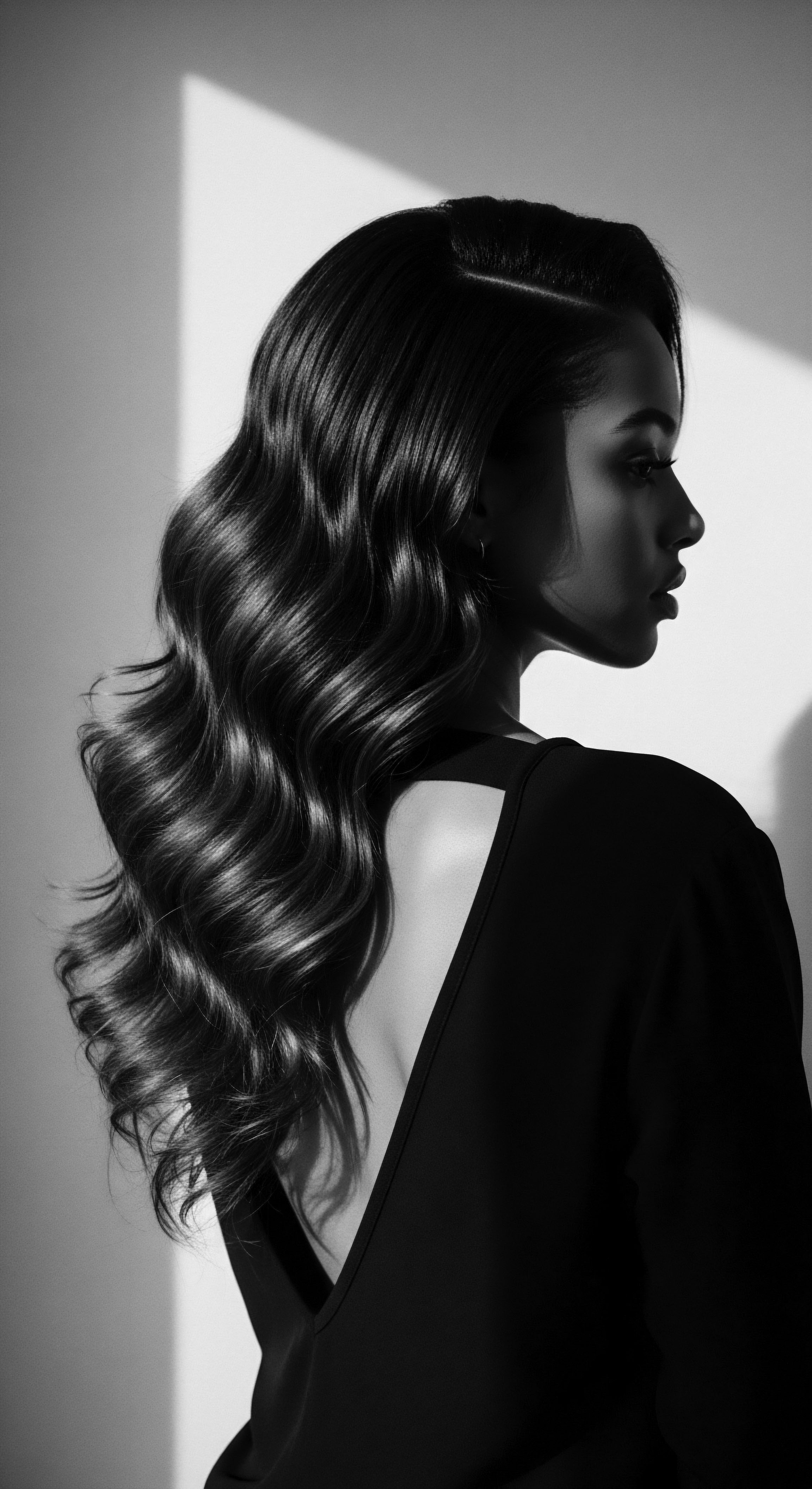
Relay
The enduring wisdom of ancestral hair care continues its relay race through time, manifesting in the sophisticated moisture routines we practice today. The journey from elemental biology and ancient practices to modern understanding is not a divergence but a continuous conversation, where contemporary science often provides a deeper articulation for what our forebears understood through observation and generations of practice. The very structure of our hair, which necessitates meticulous moisture, remains a constant, a call to care across the ages.
Modern hair science, with its ability to peer into the microscopic world of the hair shaft, increasingly validates the efficacy of traditional moisture practices. For instance, the use of emollient plant oils and butters, like shea butter and palm kernel oil, was not merely a traditional custom; it was an intuitive chemical understanding. These natural lipid-rich substances form a protective layer on the hair, reducing water loss and helping to smooth the cuticle. Contemporary research on emollients in hair products speaks directly to this ancestral insight, demonstrating how fatty acids within these natural ingredients effectively seal in moisture and protect the hair from environmental stressors.
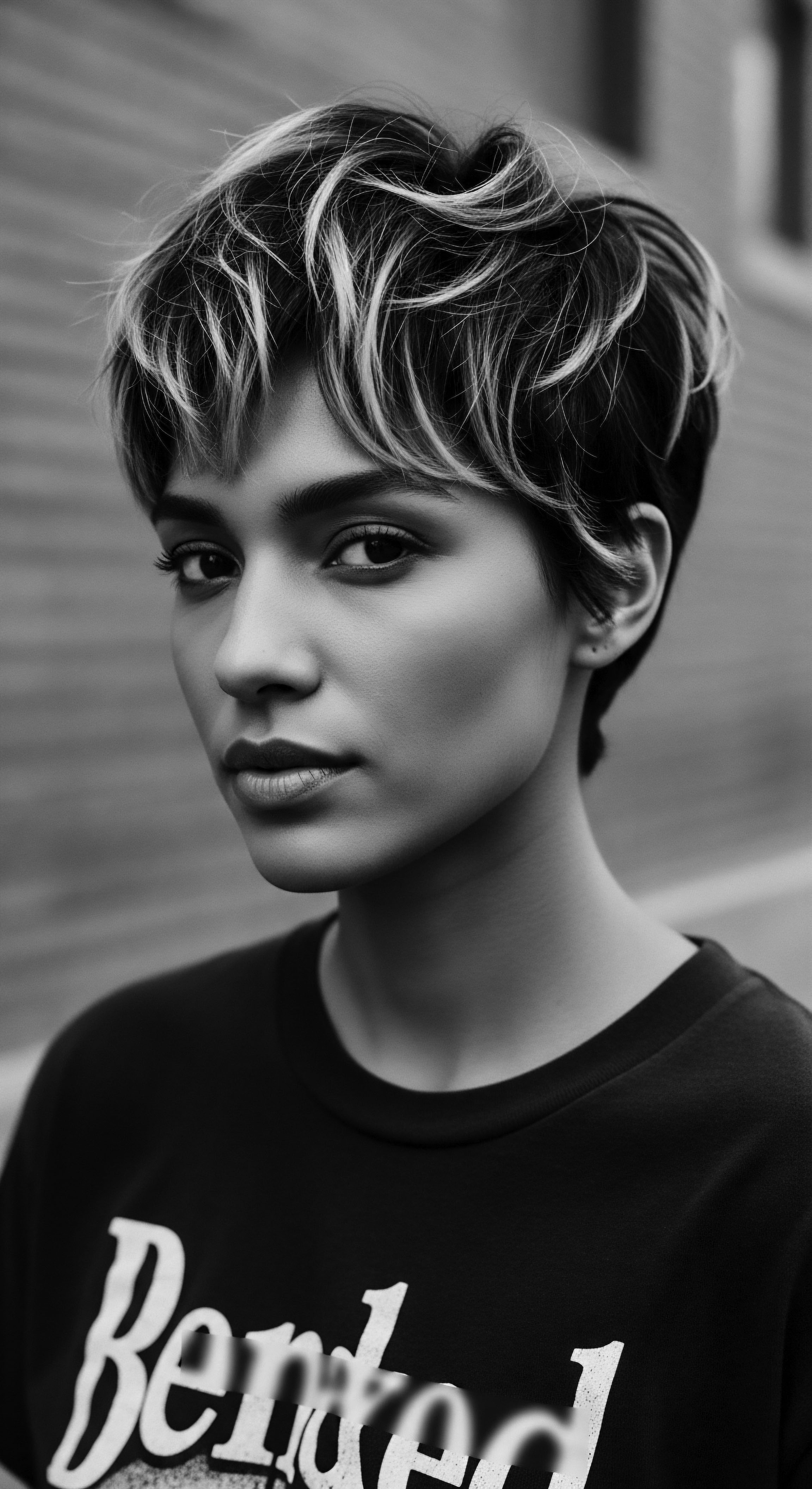
How Does Ancestral Product Knowledge Inform Modern Formulations?
The selection of specific botanicals by our ancestors was a testament to their deep ecological knowledge. Consider the remarkable properties of shea butter, which has been used in West Africa for centuries. Studies confirm its moisturizing, anti-inflammatory, and protective attributes, stemming from its rich composition of fatty acids, vitamins A, E, and F. This empirical knowledge of shea butter’s benefits has led to its widespread adoption in modern textured hair products, from conditioners to styling creams.
The very ingredients that formed the core of ancient moisture rituals are now scientifically celebrated for their efficacy, bridging millennia with their enduring power. The journey of these ingredients from village mortar and pestle to industrial mixers highlights a continuity of purpose.
Another compelling example lies in the traditional use of “hair oiling.” This practice, common across various cultures, including West Africa and parts of Asia, involves applying oils to the scalp and hair to nourish and lock in moisture. Science now confirms that certain oils, such as coconut oil, can indeed penetrate the hair shaft, reducing protein loss and strengthening strands from within. This scientific validation reinforces the profound wisdom embedded in ancient routines, showing that the physical action of oiling provided tangible benefits for hair integrity and moisture retention, long before laboratories could explain the molecular interactions.
Modern scientific inquiry often provides empirical backing for the moisture-retaining efficacy of ancestral hair practices and ingredients.
A specific historical example illustrating this potent connection is the traditional hair care of the Himba women of Namibia. For centuries, they have used a unique mixture called Otjize, a paste of butterfat and ochre, applied to their hair and skin. This concoction serves not only as a distinctive cultural adornment but also as a powerful moisturizing and protective agent against the harsh desert climate. The butterfat seals moisture into the hair, while the ochre provides a natural sunblock and a barrier against dust.
Even without modern scientific apparatus, their meticulous daily application of otjize speaks to an intuitive understanding of emollients and environmental protection for maintaining hair and skin health in extreme conditions. (Afriklens, 2024, p. 1) This enduring practice demonstrates a living archive of moisture management, directly influencing contemporary approaches to sealing and protecting textured hair.
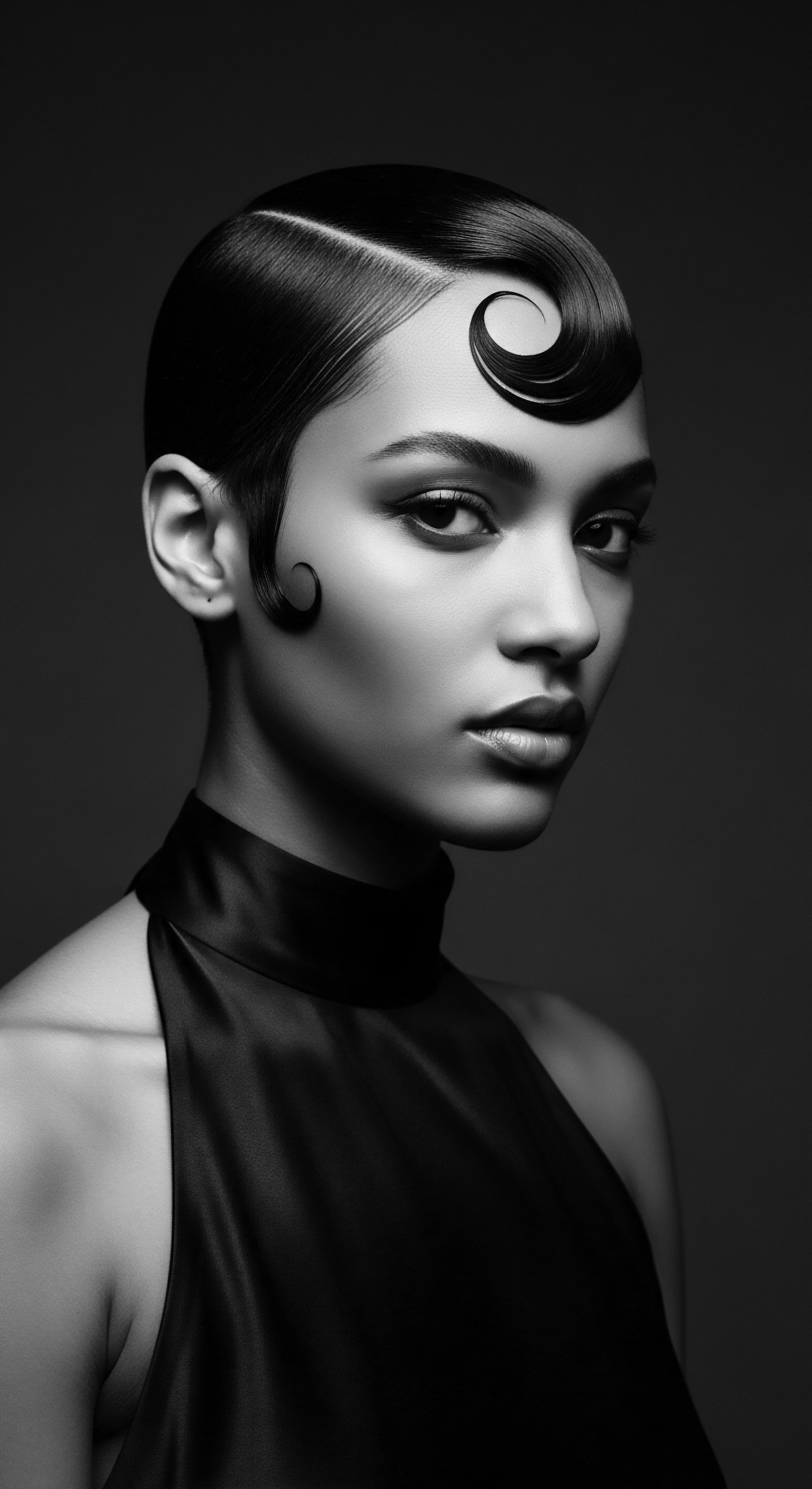
Nighttime Care ❉ A Timeless Practice
The concept of protecting hair during sleep, seemingly a modern innovation with satin bonnets and pillowcases, holds deep ancestral roots. While satin and silk fabrics may be contemporary materials, the principle of minimizing friction and retaining moisture during rest is a tradition that spans generations. Historically, head wraps and coverings were used for various reasons—cultural expression, status, warmth, and critically, hair protection.
These coverings served to shield hair from the elements and to preserve styled looks, which implicitly meant preserving moisture. The continuity of this practice speaks to an inherited understanding of the hair’s vulnerability during periods of repose and the need to create a protective sanctuary.
| Ancestral Practice Oiling and Buttering with Shea, Palm, Ghee |
| Modern Parallel / Scientific Link LOC/LCO method, leave-in conditioners, deep conditioners, lipid-rich hair masks. These echo the sealing and moisturizing properties of ancient natural emollients. |
| Ancestral Practice Protective Hairstyles (Braids, Twists, Threading) |
| Modern Parallel / Scientific Link Box braids, cornrows, twists as modern protective styles. Scientific understanding of reduced manipulation leading to less breakage and improved length retention. |
| Ancestral Practice Head Wraps & Coverings for sleep and protection |
| Modern Parallel / Scientific Link Satin/silk bonnets and pillowcases. Reduces friction, prevents moisture loss, and maintains hair texture. |
| Ancestral Practice Communal Hair Care as social bonding |
| Modern Parallel / Scientific Link Hair salons as community hubs, online natural hair communities. These spaces continue to offer shared knowledge, emotional support, and cultural affirmation. |
| Ancestral Practice The evolution of textured hair moisture routines consistently reclaims and reinterprets ancestral wisdom for contemporary needs. |
The night offers a quiet, often overlooked, period for hair rejuvenation. Ancestral communities understood this cycle, preparing their hair for rest not just for comfort, but to preserve the benefits of the day’s care. This ritual allowed moisture to permeate the strands more deeply, undisturbed by external factors. Today, we simply call it “nighttime hair protection,” yet its enduring purpose is a direct lineage from those who first recognized the silent work of restoration that occurs as we sleep.

Reflection
The odyssey of textured hair care, from its ancient origins to its vibrant contemporary expression, is a powerful testament to the enduring human spirit and the profound wisdom of ancestral practices. Our moisture routines today are not isolated innovations; they are living echoes, a continuation of dialogues started generations ago. The inherent thirst of coiled strands, a biological reality, met with ingenious solutions drawn from the earth and refined through collective experience.
This deep connection to heritage is not a static concept; it is a dynamic, living force. Each time we apply a rich butter, lovingly braid our hair, or cover our crowns for rest, we participate in a lineage of care that stretches back through time. It is a remembrance of resilience, a celebration of identity, and a quiet homage to the ingenuity of those who came before us. This legacy reminds us that true beauty care goes beyond superficiality; it anchors itself in understanding, respect, and a profound reverence for the journey of our hair and the stories it holds.
The “Soul of a Strand” ethos, in its essence, speaks to this unbreakable bond. It invites us to consider our hair not just as a physical attribute, but as a living archive, a repository of cultural memory and ancestral strength. Moisture, then, is not merely about hydration; it is about nourishing this living archive, ensuring its health and enabling its continuous expression. In every drop of oil, every careful detangling session, every protective style, we are not just caring for hair; we are honoring a heritage that continues to shape our identities and guide our steps forward.
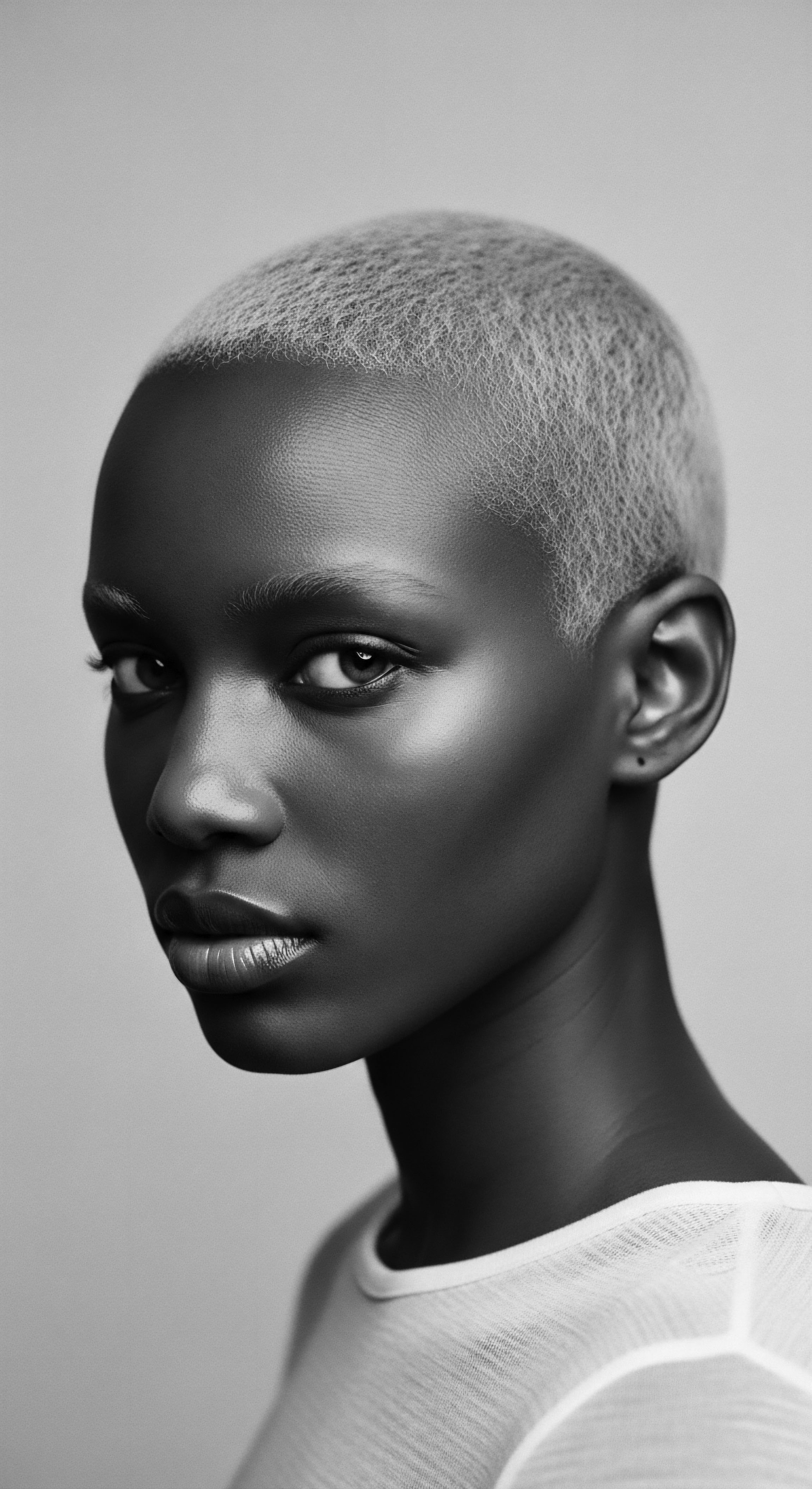
References
- “Historical Perspectives on Hair Care and Common Styling Practices in Black Women.” PubMed Central (PMC), 4 Mar. 2025.
- “Understanding Hair Oiling ❉ History, Benefits & More – Cécred.” Cécred, 15 Apr. 2025.
- “Red Palm Oil & Palm Kernel Oil – For Hair Care & Skin Care – New Directions Aromatics.” New Directions Aromatics, 5 Oct. 2017.
- “RA Cosmetics 100% Pure and Natural African Shea Butter – Handcrafted Moisturizer with Essential Vitamins for Radiant Skin and Luscious Hair – 32 oz Jar – Amazon.com.” Amazon.
- “The Remarkable History Behind Black Hairstyles. – University of Salford Students’ Union.” University of Salford Students’ Union, 29 Oct. 2024.
- “Hair Care Practices from the Diaspora ❉ A Look at Africa, America, and Europe.” NaturallyCurly.com, 23 Jan. 2025.
- “Pure West African Batana Oil( Palm Kernel Oil) – KhalidaNaturals.” KhalidaNaturals.
- “Shea Butter for Hair ❉ Raw, Hair Growth, and Natural Hair – Healthline.” Healthline, 13 Mar. 2018.
- “Raw shea butter-150ml – Sheamiracles.” Sheamiracles.
- “ Shea ❉ African women’s golden product – Jean Louis David.” Jean Louis David.
- “Raw & Organic Shea Butter Canada – African Fair Trade Society.” African Fair Trade Society.
- “Heavy is the Head ❉ Evolution of African Hair in America from the17th c. to the 20th c. – Library of Congress.” Library of Congress.
- “Black History Month ❉ The Rich History of Our African Hair – Livara Natural Organics.” Livara Natural Organics, 7 Feb. 2023.
- “Protective Styling ❉ How African Hair Braiding Promotes Healthy Hair.” Afriklens, 28 Sept. 2023.
- “Ancient African Hair Growth Secrets For Healthy Hair | Sellox Blog.” Sellox Blog, 4 June 2021.
- “Black Hair Care and Its Culture, a story – African American Registry.” African American Registry.
- “The History of Black Hair – Creative Support.” Creative Support.
- “What Every Dermatologist Must Know About the History of Black Hair.” Dermatology Times, 30 Nov. 2023.
- “Protective hairstyle – Wikipedia.” Wikipedia.
- “Natural African Haircare ❉ Celebrating the Afro and Braids – Afriklens.” Afriklens, 3 Dec. 2024.
- “African Beauty and Skincare ❉ A Deep Dive into History, Traditions, and Natural Ingredients.” Afriklens, 16 Jan. 2025.
- “Historical Perspectives on Hair Care and Common Styling Practices in Black Women – MDEdge.” MDedge Dermatology.
- “Ancient Gems ❉ A Historical Survey of African Beauty Techniques – Obscure Histories.” Obscure Histories, 13 Feb. 2024.
- “Embracing Tradition ❉ The Lost Art of African Hair Threading – The Afro Hair & Skin Co.” The Afro Hair & Skin Co., 20 Nov. 2023.
- “Hair Oiling Is More Than A Trend—It Connects Me To My South Asian Roots – Chatelaine.” Chatelaine, 8 May 2023.
- “Benefits and Uses of Red Palm Oil for Hair – Juka’s Organic Co.” Juka’s Organic Co., 23 Aug. 2022.
- “Ancient African hair growth secrets that EASILY grow healthiest longest natural hair.” YouTube, 30 Mar. 2023.
- “Palm Oil vs. Batana Oil ❉ What’s the Difference? – Jostylin Naturals.” Jostylin Naturals, 13 Jan. 2025.
- “African Hairstyles ❉ Cultural Significance and Legacy – Afriklens.” Afriklens, 1 Nov. 2024.
- “African-American hair – Wikipedia.” Wikipedia.
- “A Brief History Of Black Hair Rituals – ELLE.” ELLE, 22 Oct. 2020.
- “The Power of Hair in African Folklore ❉ Rituals and Traditions – Bebrų Kosmetika.” Bebrų Kosmetika, 23 Aug. 2024.
- “Afro Hair Goals? It’s All About the Right Scalp Oils – Touched by An Angel Beauty School.” Touched by an Angel Beauty School, 16 Jan. 2025.
- “African hair threading – Wikipedia.” Wikipedia.
- “Tales Of African Hair; Back to Threading – Couture Africa.” Couture Africa, 11 June 2023.
- “Formulation and Evaluation of Herbal Hair Tonic ❉ A Comprehensive Review.” ResearchGate.
- “Hair Care Cosmetics ❉ From Traditional Shampoo to Solid Clay and Herbal Shampoo, A Review – MDPI.” MDPI, 19 Feb. 2019.
- “Phytocosmetics in Africa | Request PDF – ResearchGate.” ResearchGate.
- “An exploration of the hair and hair care experiences of Black South African women as a basis of consumer brand identification in – IIESpace.” IIESpace.
- “No raw oils and butters vs. Traditional African hair care? ❉ r/Naturalhair – Reddit.” Reddit, 26 Aug. 2021.
